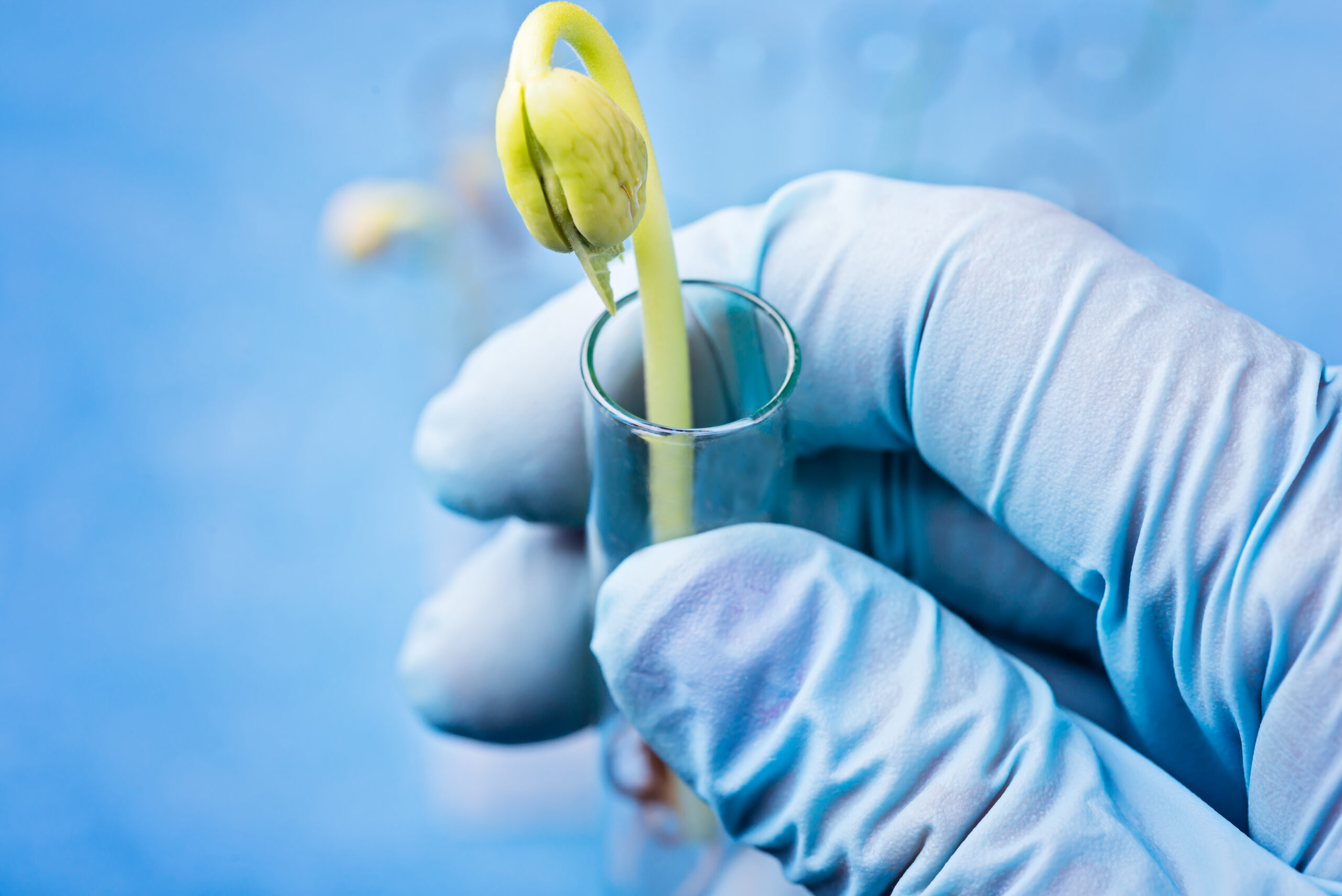- Focuses on industrial-scale production of biopharmaceuticals and biologicals.
- Utilizes genetically modified microbes, fungi, plants, and animals.
- Applications span various fields:
- Therapeutics
- Diagnostics
- Genetically modified crops for agriculture
- Processed food
- Bioremediation
- Waste treatment
- Energy production
- Three critical research areas: (i) Providing the best catalyst (improved organism, typically a microbe or pure enzyme). (ii) Creating optimal conditions through engineering for catalyst action. (iii) Downstream processing technologies for purifying proteins and organic compounds.
BIOTECHNOLOGICAL APPLICATIONS IN AGRICULTURE
Agro-Chemical Based Agriculture:
- Increased yields due to improved crop varieties, better management practices, and agrochemicals (fertilizers and pesticides).
- Limitations: Expensive for farmers in the developing world, and conventional breeding reaches its limit.
Organic Agriculture:
- Emphasizes natural methods without synthetic chemicals.
- Challenges: May have lower yields and not scalable for feeding a growing population.
Genetically Engineered Crop-Based Agriculture:
- Utilizes genetic modification for improved crops.
- Tissue Culture: Allows regeneration of whole plants from explants under sterile conditions, promoting totipotency.
- Micro-Propagation: Mass production of genetically identical plants.
- Somatic Hybridization: Fusion of protoplasts from different varieties to create somatic hybrids (e.g., pomato).
- Genetically Modified Organisms (GMOs):
- Alter genes of plants, bacteria, fungi, and animals.
- Applications: (i) Abiotic stress tolerance. (ii) Reduced reliance on pesticides. (iii) Decreased post-harvest losses. (iv) Efficient mineral usage. (v) Enhanced nutritional value (e.g., golden rice – Vitamin ‘A’ enriched).
- Used to create tailor-made plants for industrial resources (starches, fuels, pharmaceuticals).
- Biotechnological Applications in Agriculture:
- Production of pest-resistant plants (Bt cotton, Bt corn, Bt rice, Bt tomato, Bt potato, Bt soybean).
- Bt Toxin: Produced by Bacillus thuringiensis (Bt).
- Mechanism: Insects ingest inactive toxin, converted to active form in the gut, causing cell swelling, lysis, and insect death.
- Specific Bt toxin genes incorporated into crop plants based on the targeted pest.
- Production of pest-resistant plants (Bt cotton, Bt corn, Bt rice, Bt tomato, Bt potato, Bt soybean).
Pest Resistant Plants
Problem: Nematode Meloidegyne incognitia infects tobacco plant roots, leading to significant yield reduction.
RNA Interference (RNAi):
- Cellular defense mechanism in eukaryotic organisms.
- Silencing specific mRNA via complementary double-stranded RNA (dsRNA), preventing mRNA translation.
Strategy:
- Adopted to prevent nematode infestation.
- Agrobacterium vectors used to introduce nematode-specific genes into host plants.
Process:
- DNA introduction generates both sense and anti-sense RNA in host cells.
- Complementary sense and anti-sense RNA form dsRNA, initiating RNAi.
- Specific mRNA of the nematode is silenced.
Consequence:
- Parasite cannot survive in transgenic host expressing interfering RNA.
- Transgenic plant gains protection from nematode infestation.
Implementation:
- Agrobacterium vectors deliver genes into host plant cells.
- Transgenic plants produce interfering RNA, preventing nematode damage.
RNA Interference (RNAi)
Definition:
- Cellular defense mechanism in eukaryotic organisms.
- Involves silencing specific mRNA through complementary double-stranded RNA (dsRNA).
Process:
- dsRNA introduced into cells, either from:
- Viruses with RNA genomes.
- Mobile genetic elements (transposons) replicating via an RNA intermediate.
- dsRNA introduced into cells, either from:
Mechanism:
- Complementary dsRNA binds to specific mRNA.
- Inhibits translation of mRNA, preventing protein synthesis.
- Silencing specific gene expression.
Biotechnological Applications:
- Gene Silencing: Used to selectively silence targeted genes.
- Functional Genomics: Understanding gene function by silencing specific genes.
- Therapeutic Potential: Potential for treating diseases by silencing disease-related genes.
RNAi in Agriculture:
- Pest Resistance: Introduction of dsRNA targeting pest-specific genes in crops.
- Crop Improvement: Enhancing traits and resisting infections through gene silencing.
Tools for RNAi:
- Small Interfering RNA (siRNA): Synthetically produced RNA molecules triggering RNAi.
- MicroRNA (miRNA): Endogenous RNA molecules involved in RNAi regulation.
Challenges:
- Off-target effects.
- Delivery of RNAi molecules to target cells.
- Ensuring specificity in gene silencing.



